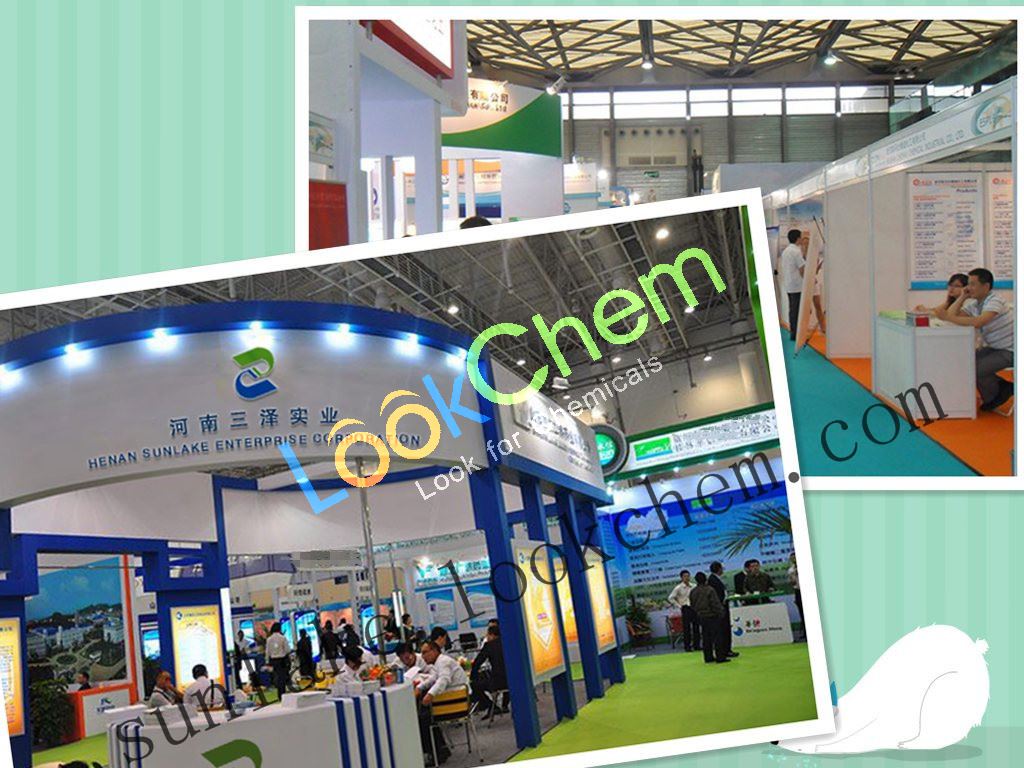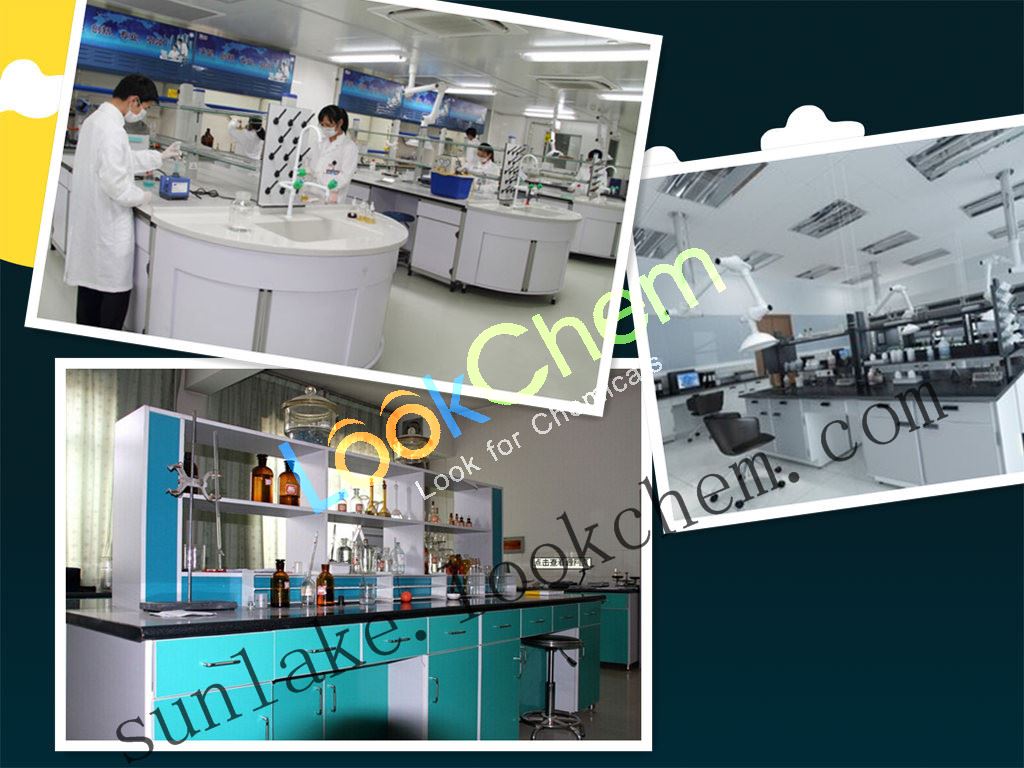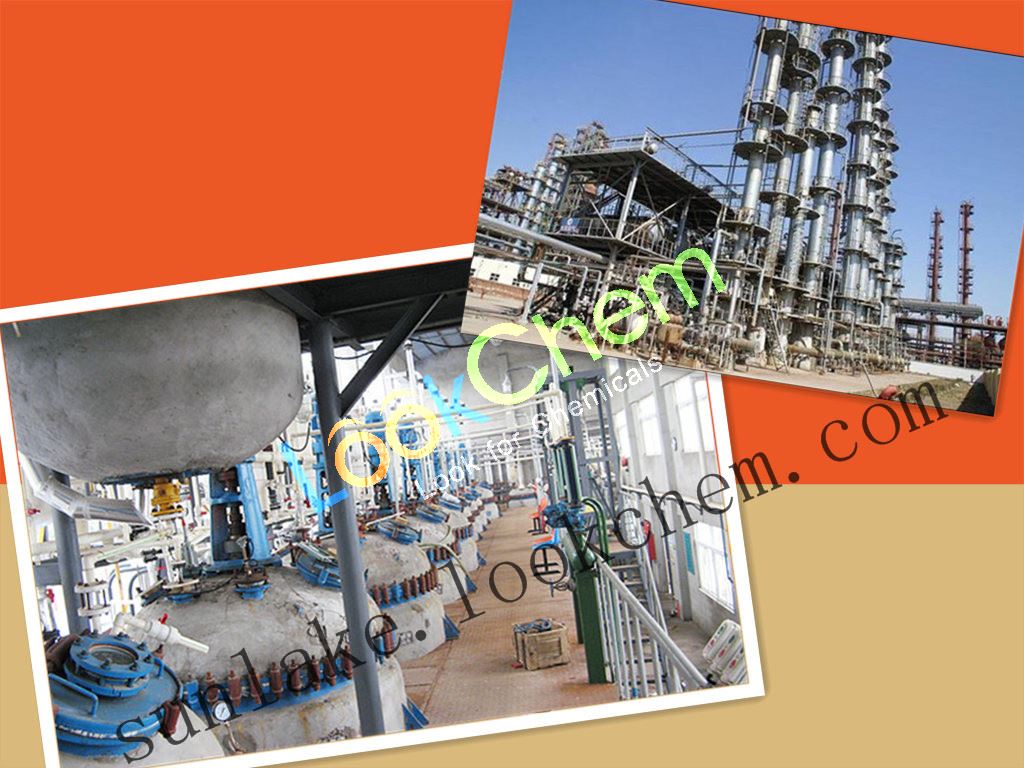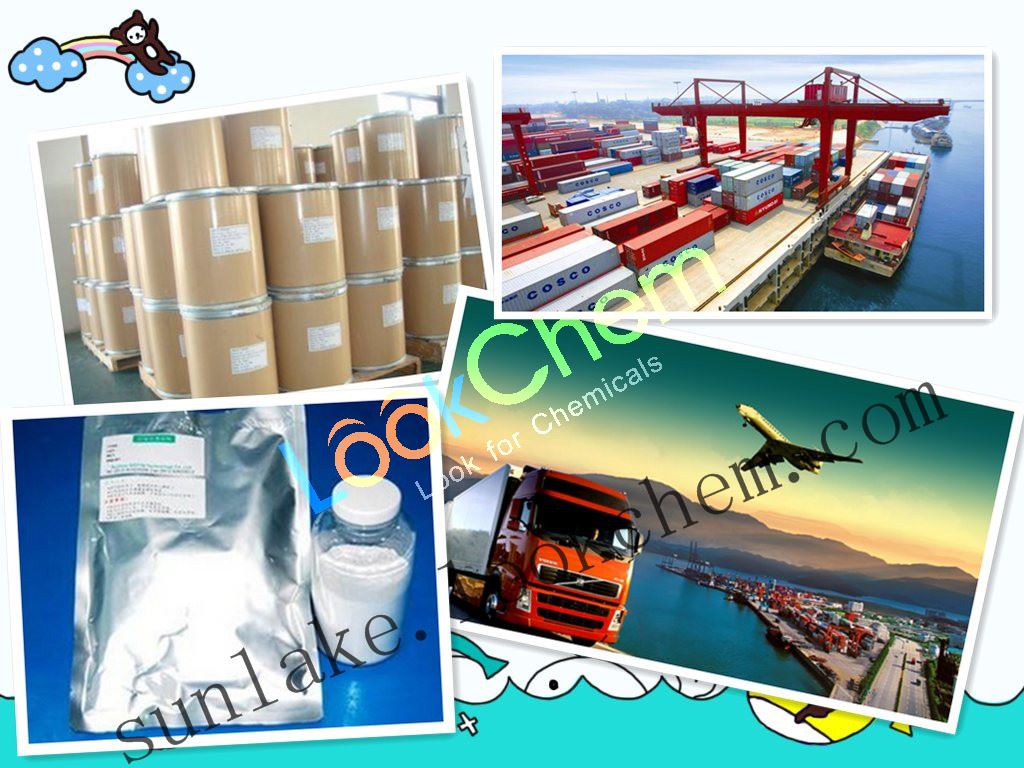- Min.Order :100 Kilogram
- Purity: 99%
- Payment Terms : L/C,D/A,D/P,T/T,Other
Keywords
Vitamin D3 67-97-0 C27H44O
Quick Details
- Appearance:powder
- Application:67-97-0
- PackAge:Depended
- ProductionCapacity:300|Kilogram|Month
- Storage:Refrigerator
- Transportation:by air or by sea
Superiority:
| Vitamin D3 Basic information |
| Product Name: | Vitamin D3 |
| Synonyms: | RACUMIN D;OLEOVITAMIN D3;(+)-VITAMIN D3;VITAMIN D3;VITAMIN D;(3beta,5Z,7E)-9,10-secocholesta-5,7,10(19)-trien-3-ol;(5E,7E)-9,10-Secocholesta-5,7,10-trien-3-ol;10-Secocholesta-5,7,10(19)-trien-3-ol,(3.beta.,5Z,7E)-9 |
| CAS: | 67-97-0 |
| MF: | C27H44O |
| MW: | 384.64 |
| EINECS: | 200-673-2 |
| Product Categories: | Miscellaneous Natural Products;Vitamin D3 analogs;Vitamins - Deuterated;Nutritional Supplements;Vitamins and derivatives;Chiral Reagents;Intermediates & Fine Chemicals;Pharmaceuticals;Vitamin Ingredients;Miscellaneous Compounds;Vitamin series;DROMOS;Other APIs;Inhibitors |
| Mol File: | 67-97-0.mol |
|
|
|
| Vitamin D3 Chemical Properties |
| mp | 83-86 °C(lit.) |
| alpha | 105 º (c=0.8, EtOH 25 ºC) |
| Fp | 14 °C |
| storage temp. | 2-8°C |
| Water Solubility | <0.1 g/L (20 ºC) |
| Sensitive | Air & Light Sensitive |
| Merck | 14,10019 |
| BRN | 2339331 |
| CAS DataBase Reference | 67-97-0(CAS DataBase Reference) |
| NIST Chemistry Reference | Cholecalciferol(67-97-0) |
| EPA Substance Registry System | 9,10-Secocholesta- 5,7,10(19)-trien-3-ol, (3.beta.,5Z,7E)-(67-97-0) |
| Safety Information |
| Hazard Codes | T+,T,Xn,F |
| Risk Statements | 24/25-26-48/25-23/24/25-20-11 |
| Safety Statements | 28-36/37-45-28A-36/37/39-16-7 |
| RIDADR | UN 2811 6.1/PG 2 |
| WGK Germany | 2 |
| RTECS | VS2900000 |
| F | 8-10-23 |
| HazardClass | 6.1 |
| PackingGroup | II |
| HS Code | 29130000 |
| HS Code | 29362990 |
| Hazardous Substances Data | 67-97-0(Hazardous Substances Data) |
| MSDS Information |
| Provider | Language |
|---|---|
| 9,10-Secocholesta-5,7,10(19)-trien-3beta-ol | English |
| SigmaAldrich | English |
| ACROS | English |
| ALFA | English |
| Vitamin D3 Usage And Synthesis |
| Vitamin D |
Vitamin D is steroid derivatives. It is the general term for the compounds that have similar structures and have the effect of normal skeletal growth and maintenance. At present, there are at least more than ten kinds of sterols that have vitamin D activity. But there are only two important matters, which are known as pro-vitamin D. One is ergosterol that exists in vegetable oil or yeast, which can generate vitamin D2 when irradiated by sunlight or ultraviolet radiation. It is also known as cholecalciferol or ergocalciferol. Another is 7-dehydrochlesterol that exists in the skin. It will become vitamin D3 after irradiated by the light. It is also called cholecalciferol. D2 and D3 have similar structures. They are B ring derivatives of precursors of the sterol. The difference is that the side chain of vitamin D2 has a methyl group and one double bond. Vitamin D2 and D3 are all colorless crystals. The melting point of D2 and D3 respectively are 115~118℃ and 84~85℃. They are insoluble in water, and soluble in ethanol and other organic solvents. Their solubility in vegetable oil are small. Crystalline vitamin D should be stored in dark to light and oxygen at low temperature. Vitamin D3 is more stable than D2. It is not easy to be oxidized. Vitamin D has heat stability in the near neutral solution. It will be rapidly destroyed in the acidic solution, and the rate of destruction depends on strength and temperature of the acid. However, it is stable in alkaline solution. It can tolerate alkali treatment even under high temperature conditions. In the industrial synthesis products, vitamin D3 is more. Vitamin D3 is sensitive to light and can be damaged by minerals and oxidation. But vitamin D3 has good stability after esterification and coated by gelatin, sugar and starch. The activity of vitamin D3 is also represented by International Units (IU). The amount of IU crystals vitamin D3 is 0.025μg. The active ingredient content of the industrial synthesis of vitamin D3 additive is more of 500,000 IU/g or 200 000 IU/g. For vitamin additives products, there are also additives that contain vitamin A and vitamin D3. The activity is usually 1g additive containing 500,000 IU of vitamin A and 100,000 IU of vitamin D3. The two has no antagonistic effect. And their production and use are very convenient. Vitamin D can increase the absorption and metabolism of calcium and phosphorus, prevent swine rickets, and promote the development of teeth and bones. Vitamin D dosage of pig feed is 125~200IU/kg. The amount for piglets is higher than growing pig. The amount of boar and growing pig are similar. |
| Physiological function |
Under UV irradiation vegetative ergosterol and animal 7-dehydrogenation are absorbed and convert into vitamin D2 and vitamin D3. The two vitamin D must produc further chemical changes before used by the body. 7-dehydrocholesterol first form into 25-hydroxy derivative in the liver, then generate active ingredient 1,25-dihydroxyvitamin cholecalciferol [1,25 (OH) 2D5] by hydroxylation. The main function of vitamin D is to promote intestinal absorption of calcium and phosphorus, and regulate metabolism of calcium and phosphorus in order to maintain the body's calcium and phosphorus balance. Calcium absorbed from intestinal canal can be transported through the blood circulation from the liver and kidneys to the bone and other calcified tissues, and excret from the bone to the kidneys. This transport mechanism is controlled by vitamin D. When the concentration of calcium, phosphorus in the body decreases, vitamin D can dissociate calcium from the bone. In addition, vitamin D can also control kidney tubules to reabsorb calcium and phosphorus. Vitamin D2 and vitamin D3 has the same function on ammals cows and pigs. But vitamin D3 for poultry (birds) is ten times stronger activity than vitamin D2. Vitamin D deficiency can reduce the intestinal absorption of calcium, and cause the decomposition of bone calcium and phosphorus. Young livestock will appear osteomalacia. Adult animals are easy to appear osteoporosis. Vitamin D deficiency can also lead to animal sternum and spine deformation and layers laying soft-shell eggs. Because vitamin D controls the absorption of calcium and phosphorus, too much vitamin D in dietary can cause hypercalcemia, make excess calcium deposit in the heart, blood vessels, joints, pericardium or intestinal wall, and finally lead to heart failure, joint stiffness or bowel Road disorders. Sunbathing is the most economical source of vitamin D. ergosterol or 7-dehydrogenation cholesterol in the feed will turn into vitamin D by ultraviolet radiation inside an animal for the utilization of carcass. Hay, corn leaves yeast, barley, oats, wheat after insolation and yeast after ultraviolet treatment are better sources of vitamin D. Animal products can be directly provide vitamin D to livestock, such as eggs, milk. The content of vitamin D in cod liver oil is very high. Diets need to be added vitamin D for reared animals and insufficient sunlight animal. The above information is edited by the Chemicalbook of Ge Qian. |
| Content analysis | Same with “vitamin D2 (01043)”. But all ergocalciferol is replaced by cholecalciferol. |
| Toxicity |
GRAS(FDA,§182.5953,2000) LD50 42mg/kg(rat,by oral) |
| Maximum level |
GB 14880-94: same with “01043, vitamin D2” FDA, §18. 1950(2000): same with “01043, vitamin D2” |
| The maximum permissible usage and maximum allowable residue in food additives |
|
| Chemical property | White columnar crystals or crystalline powder, odorless and tasteless. Melting point 84~88℃, specific rotation αD20 =+105°~+112°. Easily soluble in chloroform, soluble in alcohol, ether, cyclohexane and acetone, slightly soluble in vegetable oil, insoluble in water. Good heat resistance, but unstable for light. Easily oxidized in air. Rats by oral LD1042mg/kg. |
| Applications |
1. Vitamin D3 can maintain normal metabolism of calcium and phosphorus, promote the body's absorption of calcium and phosphorus. When it is lacked, children are easy to get rickets. Regulations in China provides it can be used to strengthening margarine. The dosage is 125~156μg/kg. The dosage in fortified dairy products is 63~125μg/kg. The dosage in strengthening infant food is 50~100μg/kg. And the dosage in strengthening milk and milk drink is 10~40μg/kg. The largest dosage in the strengthening solid drinks and ice cream is 10~20μg/kg. 2. Vitamin D3 can maintain normal metabolism of calcium and phosphorus and promote the body's absorption of calcium and phosphorus. The utilization of 1. vitamin D2 and D3 for pigs are the same, but the utilization of vitamin D2 for poultry is only 1/40-1/30 of vitamin D3. When lack of Vitamin D3, eggshell will become thin, the rate of laying will decrease, and rickets will appear. The amount can be 1000-1500IU/kg. 3. Vitamin D is a fat-soluble vitamin. There are a dozen compounds that are known to have the effect of vitamin D. Vitamin D2 and vitamin D3 have the important practical significance in no lines steroid derivative. D3 is given priority to with in the world, "International Standards" of vitamin D is pure crystalline D3. The main function of vitamin D are metabolism of calcium, phosphorus. It is difficult to promote the absorption of calcium and phosphorus and the calcification of bone. When the body is lack of vitamin D, the ability to absorb calcium and phosphorus will decrease, and the content of calcium and phosphorus in the blood will reduce. Then calcium and phosphorus cannot be deposited in bone tissue, even bone salt will dissolve and hinder the bone calcification. Children lack of vitamin D will get rickets. Adult lack of vitamin D will get osteomalacia. Japanese like to produce and use D2. In a variety of demand, the amount of pharmaceutical is 30%, feed additives is 65%, and food additives is 5%. According to the "food fortifier use of health standards (1993)" issued by Ministry of Health, D2 and D3, as nutritional supplements, can be used for liquid milk, margarine, dairy products and baby food. 4. Vitamin medicines. It mainly can promote intestinal absorption and deposition of calcium and phosphorus for the treatment of rickets and osteomalacia. 5. It is mainly used in food, health products and other related products. |
| Production method |
1. 7- dehydrocholesterol is dissolved in ethanol, and then treated with ultraviolet light to open the ring. The reaction mixture is concentrated, frozen and filtered. The filtrate is concentrated under reduced pressure nitrogen to dryness to give a crude liquid vitamin D3. Then it is refined to get vitamin D3. 2. Vitamin D3 naturally exists in the liver, egg yolk and milk. The production method in the industry starts from vegetable oil or yeast to extract 7-dehydrocholesterol that is not absorbed by the human body. Then it is dissolved in chloroform or cyclohexane. And then it converts to vitamin D3 by the ultraviolet radiation in the quartz glass flask. 3. Vitamin D3 naturally exists in the liver, egg yolk and milk. The production method in the industry starts from vegetable oil or yeast to extract 7-dehydrocholesterol that is not absorbed by the human body. Then it is dissolved in chloroform or cyclohexane. And then it converts to vitamin D3 by the ultraviolet radiation in the quartz glass flask. |
| Chemical Properties | Crystalline |
| Usage | vitamin D3 |
| Usage | carnitine replenisher in peripheral arterial disease |
| Usage | The vitamin that mediates intestinal calcium absorbtion, bone calcium metabolism and probably, muscle activity. Occurs in and is isolated from fish liver oils. Vitamin D acts through a receptor that i s a member of the ligand-dependent transcription factor superfamily. Modulates the proliferation and differentiation of both normal and cancer cells. Has antiproliferative and antimetastatic effects o n breast, colon, and prostate cancer cells. Activated vitamin D receptors in intestine and bone maintain calcium absorbance and homeostasis. |
| Usage | selective phosphodiesterase-4 inhibitor (PDE-4 inhibitor) under investigation for treating respiratory diseases involving chronic inflammation such as asthma or COPD (smoker’s lung) |
| General Description | Fine colorless crystals. Water insoluble. |
| Air & Water Reactions | Sensitive to moisture, air and light. . Water insoluble. |
| Reactivity Profile | Vitamin D3 may react vigorously with strong oxidizing agents. May react exothermically with reducing agents to release hydrogen gas. |
| Health Hazard | SYMPTOMS: Symptoms of exposure to Vitamin D3 may include weakness, fatigue, lassitude headache, nausea, vomiting, diarrhea, polyuria, polydipsia, nocturia, decrease urinary concentrating ability, proteinuria, tissue calcification, hypertension and osteoporosis. |
| Fire Hazard | Flash point data for Vitamin D3 are not available. Vitamin D3 is probably combustible. |
Service we provide:
1. Mixed container, we can mix different items in one container.
2. Quality control, before shipment, free sample for test. after shipment, keep sample for 3 years
3. Prompt shipment with professional documents
4. Packing as your request, with photo before shipment
Details:
- Exhibition in shanghai
We have clients throughout the world:
Professional service and rich experience make customers feel at ease, adequate stock and fast delivery meet your desire.

Our Laboratoy
We have our own independent lab test center:
This makes sure that our technology support is reliable and authoritative.All of self-owned fine chemicals are manufactured strictly in accordance with international standard.,and also has scientific cooperation with local colleges and institutes.

Our factory
High quality with competitive price:
We are manufacturer and can provide high quality products with factory price

Package & Shipment
Fast and safe delivery:
Parcels can be sent out within 24 hours after payment. Tracking number is available
Secure and discreet shipment. You have various choices of transportation methods

You Might Also Like
Related Searches
About|Contact|Cas|Product Name|Molecular|Country|Encyclopedia
Message|New Cas|MSDS|Service|Advertisement|CAS DataBase|Article Data|Manufacturers | Chemical Catalog
©2008 LookChem.com,License: ICP
NO.:Zhejiang16009103
complaints:service@lookchem.com Desktop View